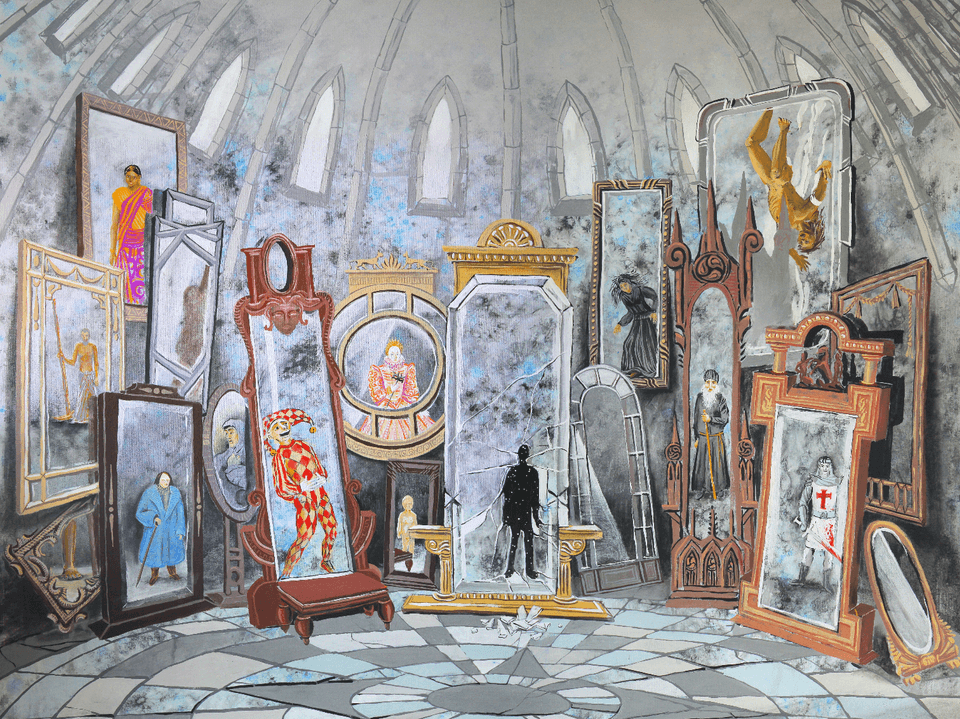The Ultimate Guide to Branding With Archetypes in 2023

Learn about the 12 brand archetypes
-
- 1. The Outlaw brand archetype
- 2. The Magician brand archetype
- 3. The Hero brand archetype
- 4. The Lover brand archetype
- 5. The Jester brand archetype
- 6. The Everyman brand archetype
- 7. The Caregiver brand archetype
- 8. The Ruler brand archetype
- 9. The Creator brand archetype
- 10. The Innocent brand archetype
- 11. The Sage brand archetype
- 12. The Explorer brand archetype
-
Brand archetypes are essential for connecting with your target audience
Think about the brands you love most. Think about the clothing companies, furniture stores, digital platforms, online stores, and other businesses you love to shop with.
Why do you enjoy most about these brands? Is it the quality of the product that stands out? The price? Or the customer service? These factors may play a role in your decision-making process, but chances are, the brands you're thinking of right now have successfully connected with your emotions. And they likely used a brand archetype to do so.
Brands that connect, succeed
There are millions of brands in the world. But the ones that succeed are those that know how to reach their target audiences in a meaningful way. By understanding the personality type of their customers, they know exactly how to position their product or service in a way that's memorable, enjoyable, and desirable. That's where archetypes come in!
Archetypes help businesses understand their customers
One way to understand your customers' personality and preferences is to determine their underlying personality archetype— or the general pattern of thoughts, goals, and desires that a group of people with similar personalities have in common.
According to human psychology, there are 12 overarching archetypes. Every person, while unique, still falls into one of these general 12 categories.
Understanding the archetype of your target market gives you unique insights into how you can connect with that group on a meaningful level. That's why your market's archetype is a crucial element of your customer persona— the detailed document that describes your ideal customer.
There are two main ways to leverage archetypes
The first way to use archetypes in business is to understand your customers on a deeper level. Once you know which archetype your ideal customers fall into, you can do a deep dive into the habits, preferences, motivations, fears, and desires of that personality type. That research will give you valuable insights into what products and services to develop, how to market them, and what brand strategy elements may fall flat.
The second way to use archetypes is to embody one yourself! Personified brands— those that feel like a real human person with thoughts and feelings— connect with target audiences on a deeper level. And by leveraging a brand archetype for your business, you too can build a valuable connection with your market.
What is a brand archetype?
While a personality archetype refers to the general pattern and preferences of people, a brand archetype is the brand personality your company embodies. Typically, companies will choose a brand archetype that matches that of their audience, so their brand voice has the best chance of capturing that audience's attention.
The best, most successful brands around the world have established deep emotional connections with their target audiences by creating brand identities that are strategic, memorable, and relatable. How did they successfully create a relatable brand identity that their customers couldn't help but connect with? By leaning into a single archetype from the list below.
1. The Outlaw brand archetype
The outlaw archetype, also known as the rebel brand archetype, is all about freedom from the status quo, independence to live their own way, and the bold brashness to shake things up. They've got an angry streak, but they're not all bad. The rebel brand archetype is driven by a desire to make their own way, and is always ready to meet challenges head on.
One of the most notable brand archetype examples for the outlaw archetype is Harley Davidson. The brand's rough-and-tumble personality speaks to the gritty audience Harley Davidson pursues.
2. The Magician brand archetype
The magician archetype is one of the most whimsical, visionary brand archetypes. These brands appeal to our inner child, creating a world only limited by imagination and our creative process.
A couple brand archetype examples for the magician include Coca-Cola and Disney— two brands that use their products to spread happiness.
3. The Hero brand archetype
The hero brand archetype is courageous, strong, and determined. Hero brands are willing to face their fears and triumph in the face of adversity. And the hero archetype often has something to prove— either to themselves or to others.
You'll recognize some of the biggest hero brands, like Adidas, Nike, and FedEx. These brands believe in working hard, doing good, learning as you go, and accomplishing more than you ever thought possible.
4. The Lover brand archetype
The lover brand archetype is marked by emotional language, feelings of closeness, and a sense of belonging. Because the lover brand archetype is all about appealing to the senses, lover brands often use visual, sensory language to describe their products. You'll see words like indulgence, luxury, softness, fragrance, and beauty in this brand message.
Victoria's Secret and Dove Chocolates are two examples of brands that appeal to the lover archetype.
5. The Jester brand archetype
Jester brands are the most optimistic of all 12 brand archetypes. The jester archetype is marked by a love of playful fun, a willingness to think outside the box, and a cheeky desire to make others laugh. This playful aspect of the jester personality makes it the perfect archetype for brands that offer humor, good times, or light-hearted products.
Some of the most recognizable jester brands are the Dollar Shave Club and Old Spice. Both brands use humor to create memorable, sharable content.
6. The Everyman brand archetype
The everyman archetype is your classic boy- or girl-next-door. These brands aren't showy, expensive, or overly luxurious. They're attainable by down-to-earth, everyday people.
When you think everyman, think brands like IKEA and Toyota. They're affordable, relatable, and always within reach.
7. The Caregiver brand archetype
The caregiver brand archetype is all about giving back. These businesses may be selling something, but the purpose of their products or services is to make modern society a better place along the way. And caregiver brands strongly appeal to those who hold their same values and selfless personality.
One of the top caregiver brands is Toms shoes. Toms donates a pair of shoes for every pair purchased, appealing to the kind-hearted nature of its target audience.
8. The Ruler brand archetype
The ruler archetype likes to be in control. This leadership personality strives to be in charge in every situation, commanding attention in every room it enters. Ruler brands are strong, confident, and bold— and as a result, their personality tends to be successful, wealthy, and powerful.
Ruler brands like Rolex and Rolls-Royce embody this sense of shattering the status quo and reaching a high level of success.
9. The Creator brand archetype
The creator archetype is all about inspiring self-expression, art, innovation, and vision. Some creator brands are known for solving complex problems in a completely new, forward-thinking way. Others empower their customers to unleash their imagination through play or design.
Adobe and Lego are two great examples of creator brands that give their customers the tools they need to build, design, and make amazing, innovative things.
10. The Innocent brand archetype
The innocent brand archetype values purity, safety, and optimism. Innocent brands are honest in their dealings, kind in their marketing, and act with integrity. Innocent brands also often look for sustainable manufacturing methods and produce planet-friendly products.
Two recognizable companies that leverage an innocent branding strategy are Burt's Bees and Aveeno. Both companies lean into their innocent archetype by producing natural, clean, safe products that care for people and create a better world.
11. The Sage brand archetype
The sage brand archetype aims to help the world by delivering knowledge, insight, and understanding. Sage brands are philosophical— eager to engage in a deep conversation, or help others understand a complex problem. Because the sage archetype is highly intelligent, their brand voice isn't afraid to use a big vocabulary word or two, when fitting.
Sage brands like the BBC and TED are passionate about delivering knowledge to the world in new, easily digestible ways.
12. The Explorer brand archetype
Finally, the explorer archetype is an adventurous personality eager to break away from existing paradigms and create its own path forward. Explorer brands are curious, daring, and exciting— the first to get out of their comfort zone and try something new.
Patagonia and The North Face are two great examples of brands that use the explorer archetype to connect with their target audiences.
Brand archetypes are essential for connecting with your target audience
Every person embodies one of the 12 brand archetypes we shared above. That's why brands that align with one of these key personalities are easier to connect with. By communicating in a way your audience can understand and relate to, and positioning your brand as a company with a true personality, your brand message stands out.
When you know your target audience's favored archetype, you know how to make a true connection
It's tempting to take a few traits from one archetype, borrow a few more from another of the 12 brand archetypes, and end up with a brand personality that's a mashup of multiple archetypes.
Unfortunately, by picking and choosing personality traits from several brand archetypes, you end up with brand messaging that fails to be emotionally appealing to anyone!
The power in these 12 brand archetypes is that they each embody a unique personality type that represents your target market. And to connect with that market, businesses must be willing to align their brand story, marketing campaigns, and visual identity with their chosen brand archetype.
Luckily, once you understand the main characteristics of the 12 brand archetypes, it shouldn't be difficult to pick a dominant personality for your brand. After all, there's likely to be one main brand archetype you relate to most!
Unsure if you've nailed your brand archetype? ZeBrand can help
Once you've selected one of the brand archetypes and molded your branding strategy around it, it's time to gather some feedback.
The longer you've been in business, the harder it is to perceive how your target audience views your brand personality. You may believe your brand voice speaks directly to your market, but in reality, it's falling flat. That's why it's helpful to have an outside expert review your brand strategy and study your brand message to see how they align with your main brand archetype.
To see how your brand strategy stacks up— or to use our helpful Brand DNA builder—start here!
How to leverage your brand archetype to grow your business
Once you've narrowed down the 12 brand archetypes and chosen the best personality to represent your brand and connect with your audience, it's time to incorporate that archetype into your brand strategy.
Here are three ways to carry your brand archetype into your business' marketing, brand message, and visual identity.
Communicate your brand archetype through your brand message
Your messaging— the brand story, brand voice, marketing, and content you create to communicate your brand's personality— should match the personality of the archetype you've chosen.
For example, if your brand fits with the magician archetype, your messaging should be inspirational, aspirational, creative, lighthearted, and imaginative. Look for ways to communicate magic in your messaging, such as by appealing to the child in all of us, or by using joyful words to uplift your audience.
Align your brand vision with your brand archetype
A strong brand vision statementinspires your team, encourages your customers, and gives your company an exciting path forward. It describes the enduring value of your business— the positive change you see for the future as a result of your diligent, consistent work as a company.
With your brand archetype in mind, craft a vision statement that speaks directly to your target audience's personality. If your business targets the lover archetype, for example, think of the core desire of your market— connection. Your vision statement should reference the deep, meaningful connections your brand hopes to bring to the world.
While your vision statement may only be a few words long, it's a great opportunity to tailor your brand voice to your clearly defined audience.
Use your brand archetype to design your visual identity
Your brand personality is about more than just the words you use. Your visual identity plays a significant role in your brand's recognition and perception.
With your chosen archetype in mind, think about how you can visually represent that personality across your brand's color palette, imagery, photography, website, and graphic design. When you choose visual elements that mimic your key brand archetype, your brand is instantly more relatable to your target audience!
At ZeBrand, we help business owners discover their brand archetype and connect with their target audience
Developing your own brand message can feel overwhelming. That's why the expert Brand Coaches here at ZeBrand work one-on-one with business owners to help them discover their brand archetype and build brand messaging that resonates. Better branding, stronger advertising campaigns, and faster growth start with ZeBrand.
Click here to learn more about our brand coaching program, or use our DIY Brand DNA Builder tool here.
Aligning your branding strategy with your brand archetype can be difficult. ZeBrand's expert Brand Coaches and user-friendly Brand DNA Builder simplify the process so you can reach more of your ideal customer. Start Now or Contact Us.


